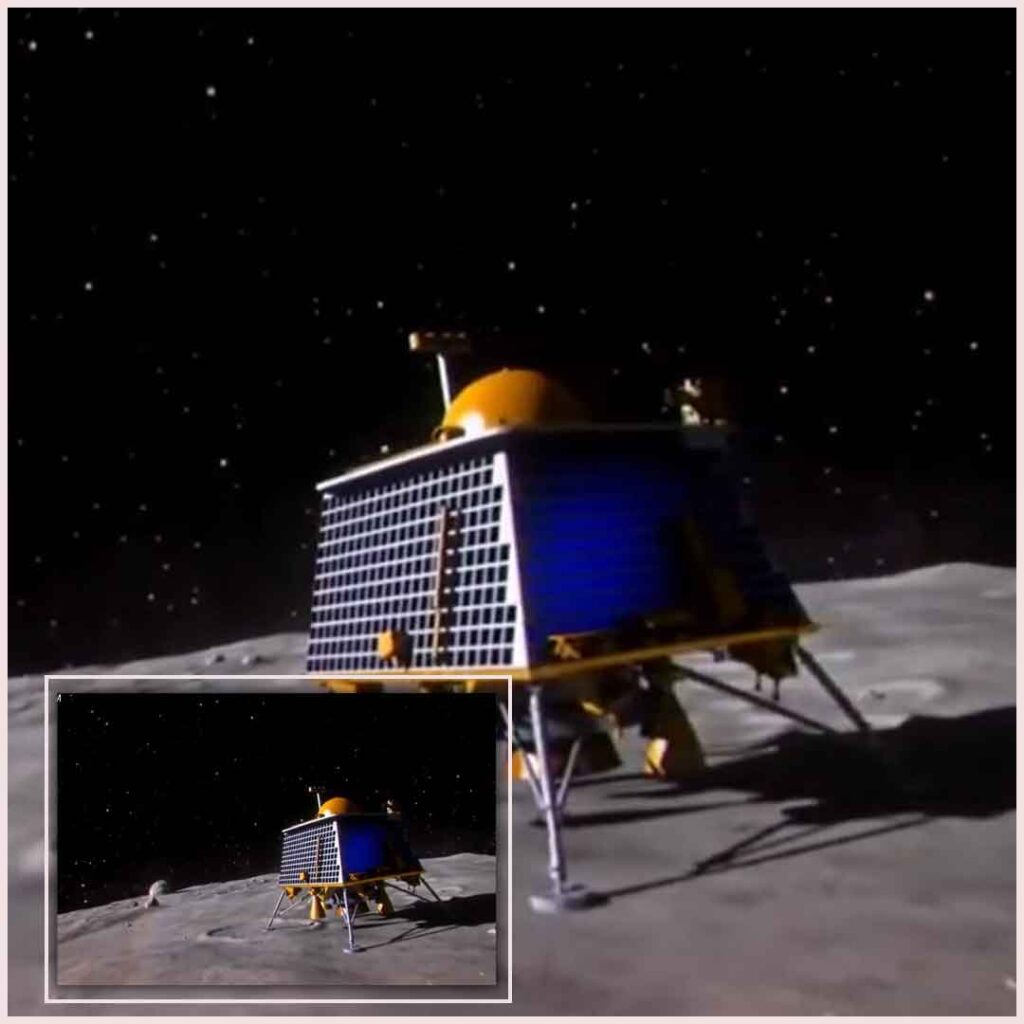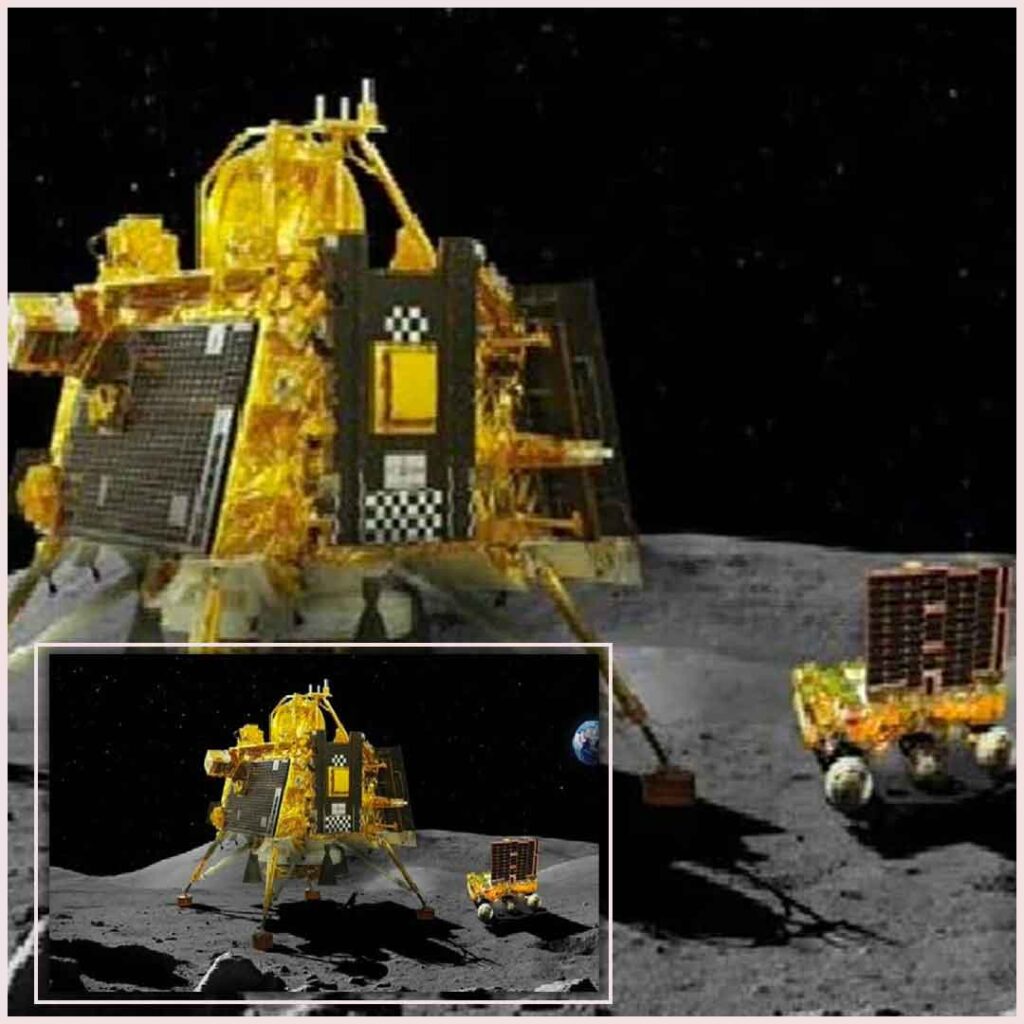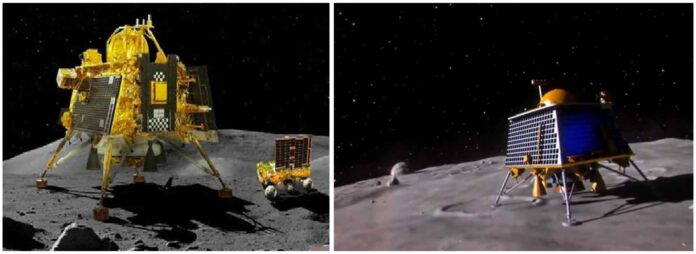The resumption of the reactivation process for the Pragyan rover and Vikram lander in the Chandrayaan-3 mission has encountered a slight delay. Initially scheduled for the evening of September 22nd, the reactivation will now take place on September 23rd. This minor adjustment in the timeline is a precautionary measure, ensuring that all systems are fully prepared for the crucial reawakening process.
Nilesh Desai, the Director of Space Applications Centre, provided insight into the situation, explaining that the plan originally involved moving the rover to a distance of approximately 300-350 meters. However, due to certain unforeseen factors or circumstances, the rover has been able to traverse a distance of 105 meters.

While this adjustment in the rover’s movement is unexpected, it’s important to recognize that space missions often encounter variables and challenges that require adaptability and careful consideration. The meticulous planning and expertise of ISRO’s team ensure that the reactivation process and the subsequent mission continue to progress methodically and safely.
The dedication of the ISRO team to achieving success in the Chandrayaan-3 mission is unwavering. As they work through the reactivation process and adapt to the changing circumstances, they remain committed to the goal of lunar exploration and scientific discovery. The world eagerly awaits the next steps in this exciting journey, as the rover and lander come back to life and continue their mission on the lunar surface.
In the midst of India’s ambitious Chandrayaan-3 mission, the country’s political landscape is buzzing with discussions about the budgetary allocation for research and development (R&D) in science and technology. The opposition has recently called for an increase in the budget to bolster India’s capabilities in these critical areas.
Chandrayaan-3 Mission Context
Chandrayaan-3, the latest lunar exploration mission undertaken by the Indian Space Research Organisation (ISRO), aims to build upon the successes and lessons learned from previous Chandrayaan missions. Its primary focus is to achieve a successful soft landing on the Moon, utilizing the Vikram lander and the Pragyan rover. This mission underscores India’s commitment to space exploration and scientific advancements.
The Role of Budgetary Allocation in Scientific Endeavors
Budgetary allocation is a fundamental aspect of any nation’s scientific and technological progress. Adequate funding is essential for promoting and sustaining R&D initiatives, which, in turn, lead to breakthroughs and innovations in various fields. Science and technology play a pivotal role in a country’s economic growth, national security, and global competitiveness.
The Opposition’s Demands
The opposition’s call for an increase in the budgetary allocation for science and technology reflects the recognition of the importance of these sectors in India’s development and progress. Their demands are rooted in the belief that a higher budget allocation will enable India to:
- Foster Innovation: Increased funding can drive innovation and research in emerging technologies, positioning India as a leader in cutting-edge fields such as space exploration, artificial intelligence, biotechnology, and renewable energy.
- Enhance Global Competitiveness: A well-funded R&D ecosystem can enhance India’s global competitiveness by producing groundbreaking technologies and attracting international collaborations.
- Address Societal Challenges: Science and technology can be harnessed to address pressing societal challenges, from healthcare to environmental sustainability, through research and innovation.
- Boost Economic Growth: Investment in R&D has the potential to boost economic growth by creating new industries, generating jobs, and increasing the overall productivity of the workforce.
The Broader Impact
The opposition’s call for increased budgetary allocation for science and technology is part of a broader conversation about the role of science in shaping India’s future. It highlights the importance of a balanced approach to budgeting, where investment in R&D is seen as an investment in the nation’s long-term prosperity and global standing.

As India continues to make strides in space exploration, such as with Chandrayaan-3, the synergy between scientific progress and budgetary allocation becomes increasingly critical. The outcome of this debate will have far-reaching implications not only for space missions but also for the entire spectrum of scientific and technological endeavors in the country.
Conclusion
The discussions surrounding budgetary allocation for science and technology in India, especially in the context of the Chandrayaan-3 mission, serve as a reminder of the vital role that research and innovation play in shaping the nation’s future. The outcome of this debate will determine the extent to which India can harness the power of science and technology to advance its economic, scientific, and strategic objectives on the global stage.






















